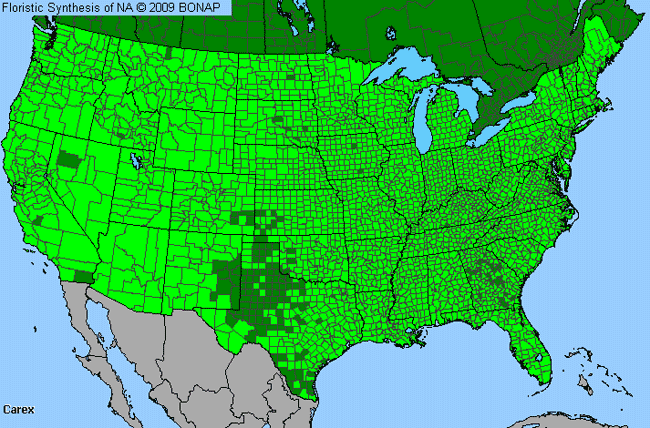Sedge (Carex)

Sedge Genus Details

Sedge is a grass-like perennial with a triangular stem. It grows in clumps and some species can grow to over 3 feet tall. The infloresence is arranged in spikes comprised of many different spikelets and the blades are long and narrow. It grows in dry to moist woodlands, open prairies, shorelines, swamps and marshes. Sedge is also a main food source for many types of wildlife, including birds and large mammals.
Sedge Allergy Info

It has been implicated as a source of pollinosis in Minnesota.
Sedge Pollen Description

Pollen grains are usually pyriform to less commonly ovoid, often oval to circular in polar view. The exine is thin and the surface is densely granular. The apertures (1-4 pores) are poorly defined and can be somewhat sunken, elongate, elliptical or ovoidal, with a loosely granular or fragmented surface.
Species in This Genus

Allergenicity Legend:
 Mild Allergen |
Mild Allergen |
 Moderate Allergen |
Moderate Allergen |
 Severe Allergen |
Severe Allergen |
 Allergy Test Available
Allergy Test Available
Sedge (Carex) is a genus of the CYPERACEAE family.
This genus includes the following allergenic species:
This genus includes the following allergenic species:















